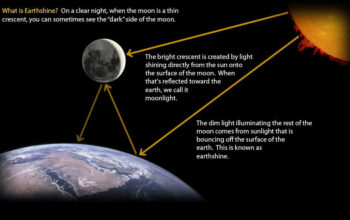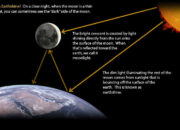Reflecting symmetry, an intrinsic quality observed in various phenomena across the cosmos, merits a meticulous examination due to its multifaceted implications extending from the realms of art to the sciences. The phenomenon of symmetry is not merely an aesthetic consideration; it is rooted deeply in the foundational principles of nature. The interplay of order and chaos often captivates human curiosity, suggestive of a universal pattern that transcends disciplinary boundaries. In this discourse, we shall delve into the significance of reflecting symmetry, exploring its manifestations, underlying principles, and the profound sense of wonder it imparts.
To initiate an understanding of reflecting symmetry, it is vital to define the term itself. Reflecting symmetry, or bilateral symmetry, manifests when an object can be divided into two identical halves that mirror each other with respect to a central axis. This type of symmetry is readily observable in biological entities, geological formations, architectural designs, and even in abstract concepts related to physics. The question arises: why do these symmetrical configurations evoke such fascination?
One compelling explanation is the psychological comfort that symmetry provides. Human beings are innately drawn to patterns that suggest harmony and balance. This predilection aligns with our evolutionary history; symmetrical features in mates have often been associated with health and genetic fitness. Thus, the prevalence of reflecting symmetry in nature serves as an evolutionary beacon, guiding choices and fostering appreciation. The connection between symmetry and beauty is thus a topic peerlessly explored across various cultures and philosophical discourses.
Beyond aesthetic considerations, reflecting symmetry lies at the core of numerous scientific principles. In physics, the notion of symmetry is pivotal, particularly in the examination of physical laws. The invariance of certain equations under symmetrical transformations underpins critical theories, such as conservation laws. For instance, the laws of physics remain unchanged irrespective of the spatial orientation of an observer, which is termed rotational symmetry. Such principles emphasize that at a fundamental level, reflecting symmetry governs much of the observable universe.
Delving deeper into the scientific significance, reflecting symmetry is a cornerstone of the standard model of particle physics. Particles such as electrons and protons exhibit symmetrical properties that dictate their interactions and behaviors. The distinction between matter and antimatter, further explored through symmetrical counterparts, accentuates how reflecting symmetry illuminates the enigma of the cosmos. The absence of equal quantities of matter and antimatter raises a profound question: does the universe have an intrinsic bias toward symmetry or asymmetry?
This inquiry leads to a broader reflection on the philosophical implications of symmetry. The rhetoric of symmetry suggests an innate order in the universe — a cosmic fabric woven with threads of balance. However, the existence of asymmetries, such as the observable predominance of matter over antimatter, introduces complexities that are equally fascinating. The asymmetrical features observed in various cosmic structures, like galaxies and star formations, provoke contemplation about the origins and trajectory of the universe itself. Would a perfectly symmetrical universe follow an entirely predictable path, or does the interplay of symmetry and asymmetry forge a dynamic, evolving cosmos?
In the realm of geometry, reflecting symmetry serves as a fundamental principle shaping both theoretical constructs and practical applications. The elegance of geometric configurations, ranging from the simple mirror-image structures seen in nature to complex fractal formations, demonstrates how reflecting symmetry informs architectural practices and technological advancements. Engineers and architects often employ principles of symmetry in design, creating structures that are both functional and pleasing to the eye. This harmonious marriage between mathematics and aesthetics reinforces the significance of symmetry in human creations.
Moreover, the depiction of reflecting symmetry in art further underscores its omnipresence in the human experience. From the intricate patterns in Islamic mosaics to the reflective quality of modern sculptures, artists exploit the allure of symmetry to evoke emotional responses. The challenge of representing symmetrical forms engages the viewer, inviting interpretations that span personal and cultural narratives. Thus, reflecting symmetry transcends its mathematical roots, becoming a language of expression that resonates across mankind.
The entwinement of reflecting symmetry with various disciplines prompts an overarching question: How does our engagement with symmetry influence our understanding of existence itself? The relationship between symmetry and chaos indicates that while order can provide comfort, it is chaos that instigates creativity and evolution. The ongoing tension between these contrasting elements invites deeper reflection on our attempts to comprehend the universe.
In conclusion, the investigation of reflecting symmetry presents a fertile ground for exploration that spans art, science, mathematics, and philosophy. Humanity’s intrinsic fascination with symmetry can be traced to both evolutionary imperatives and cultural expressions, while its scientific applications extend into our understanding of the universe’s fundamental laws. As we ponder this intricate tapestry woven from symmetrical and asymmetrical threads, we encounter a profound realization: the universe itself may be a grand reflection, a mirror showcasing both the allure of balance and the chaos of existence. The continuous dance between these dualities not only engenders intellectual inquiry but also ignites a profound appreciation for the elegant complexities of the cosmos.







